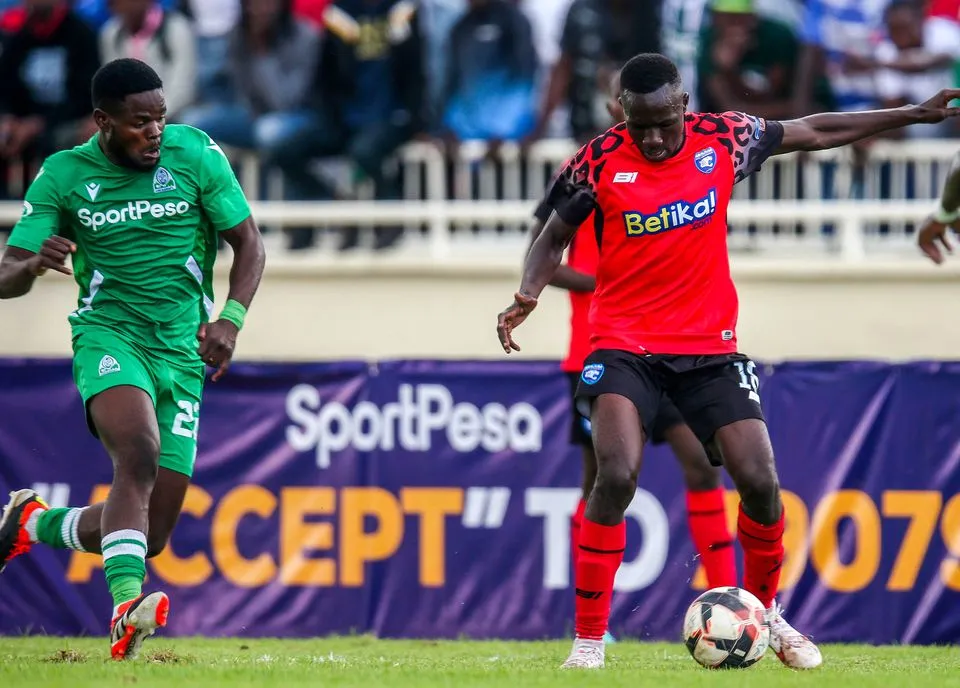Mashemeji Derby 2025, the pulsating rivalry between AFC Leopards and Gor Mahia, remains Kenyan football’s beating heart—even as the fixture’s latest chapter is overshadowed by an unprecedented run of postponements and logistical headaches.
Kenya’s biggest football rivalry held hostage by venue woes
For fans across the country, the Mashemeji Derby is more than a match. It is heritage, identity, and a cauldron of hope and heartbreak. Yet this season’s second leg has become a saga, caught in a crossfire of stadium renovations, CAF directives, and security anxieties.
Initially slated for May 11 at the Moi International Sports Centre, Kasarani, the derby’s fate spiraled into uncertainty after CAF ordered the venue unavailable due to ongoing refurbishment ahead of the 2025 African Nations Championship (CHAN). Proposed alternatives like the Ulinzi Sports Complex were rejected by clubs and management alike—concerns swirling over safety, crowd control, and the limited 6,000-seater capacity that would have slashed vital matchday revenues for the teams.
Four postponements and counting—what happened to the fixture?
This was not the first, nor second, but the fourth time this iconic fixture was postponed in the 2024/25 campaign—all due to venue complications. The first leg, originally scheduled for November 2024, was moved to March 2025 after Nyayo and Kasarani Stadiums were both closed for renovations. Ultimately, it took place on March 30 at Nyayo Stadium, ending in a nerve-wracking goalless draw in front of over 30,000 vocal fans.
The return leg, meant to be hosted by Gor Mahia, was again thrown into limbo. After optimism that Kasarani would be ready, CAF’s verdict squashed those hopes, and with Ulinzi Sports Complex not deemed viable by Gor Mahia, the search for a suitable home ground became a drawn-out dilemma. Only five rounds remain in the FKF Premier League season, ratcheting up the pressure to fit the derby in before the June 1 deadline for CAF’s club competition submissions.
Financial stakes and fan anticipation at an all-time high
The first leg of the derby highlighted not just passion, but the economic stakes for Kenya’s most storied clubs. AFC Leopards reported a gate collection of over KSh 7.3 million from ticket sales—a new record for the fixture. A capacity crowd braved security bottlenecks and chaotic entry conditions, with thousands arriving hours before kickoff and ticket scanning points overwhelmed by demand.
Such numbers are lifelines for clubs still struggling for financial stability, and both teams bristled at the prospect of staging the return leg at a smaller venue, fearing a steep drop in critical revenue. The pandemic of stadium unavailability—partly a symptom of big tournaments coming to Nairobi—has left the very soul of Kenyan football in the hands of bureaucrats and builders.
| CASINO | BONUS | INFO | RATING | |
|---|---|---|---|---|
|
bonus
New players get 50 free spins and a Ksh 2500 freebet!
See 7 Bonuses
|
info
BK 0000665 PG 0000405 Good combination of online casino and betting platform |
|||
|
bonus
Daily 99 KES sports offer boosts your game!
See 3 Bonuses
|
info
BK 0000696 PG 0000392 Fast cashouts |
|||
|
bonus
Claim 1 free spin for signing up, win up to KSH 1,000!
See 3 Bonuses
|
info
PG 0000422 Games from top providers, rewarding welcome bonus & VIP program |
|||
|
bonus
Claim your 100% FREEBET on the Betika App now!
See 8 Bonuses
|
info
BK 0000679 PG 0000394 Great bonuses and promotions |
On-pitch drama: A football spectacle denied
On the pitch, both teams find themselves at pivotal junctures. Gor Mahia are embroiled in a three-way title race with Kenya Police and Tusker, trailing by five points as of the postponement, while AFC Leopards, sitting fifth, are eager to claw back their former glory. A win for Gor Mahia in the second leg could have leapfrogged them over Kenya Police, but the endless rescheduling puts their title hopes and match rhythm at risk.
The first leg at Nyayo was a showcase of raw adrenaline, fraught with missed chances, tactical chess, and heroics between the sticks. Coaches Fred Ambani (Leopards) and Sinisa Mihic (Gor Mahia) lamented a lack of clinical finishers, with both teams ruing squandered opportunities in a match that could have swung either way.
Captains Clifton Miheso and Philemon Otieno urged calm and respectful passion from the terraces, but scenes before kick-off saw teargas deployed as fans forced entry—reminders of the derby’s combustible nature and the delicate line between fervour and chaos.
The human side: Dreams, pressure, and the cost of football passion
To play in the Mashemeji Derby is to bear the weight of generations. As AFC Leopards’ midfielder Victor Otieno confessed, the emotional build-up is extraordinary—the city awash in blue and green, nerves raw, and communication on the pitch nearly impossible due to the din. For every player, especially the new faces, the derby is a baptism by fire.
Fred Ambani’s vow to keep his unbeaten derby record—stretching back to his playing days—was as much psychological bulwark as it was headline fodder. His message to Ingwe’s squad: “It’s all in the mind. We have worked on our finishing, and I’m confident we’ll be more clinical.”
Yet for all the tactical tinkering and motivational speeches, the human cost of football’s highs and lows remains profound. Consider Leopards’ Victor Omune, who spoke candidly about overcoming personal tragedy and using football’s stage—particularly in fixtures like the Mashemeji Derby—as an anchor during his darkest days.
Rising fan issues and repeated warnings
The derby’s intensity, while a testament to its importance, has exposed perennial problems of unruliness and violence. Both Nicholas Musonye of CHAN LOC and FKF President Hussein Mohamed delivered stern warnings: “Any incident of vandalism or violence, and both clubs will be banned from stadium use.” The events at recent matches—at Nyayo during Harambee Stars’ World Cup qualifier, at Gusii Stadium during Gor Mahia’s clash with Shabana, and in viral videos of post-match violence—serve as painful reminders that football’s spirit is at risk of being overshadowed by lawlessness.
Calls for “self-policing and collective responsibility” have never been more urgent. Kenyan football stands at a crossroads—the Mashemeji Derby’s continued postponement is both a symptom and warning of deeper structural challenges.
Looking ahead—can the derby maintain its magic?
The latest guidance is that June 1 has been earmarked for the rearranged match, with organizers pinning hopes on Nyayo Stadium, pending completion of renovations for the Kip Keino Classic on May 31. If Nyayo is not ready, Ulinzi Sports Complex will host the match—and the FKF has indicated there will be no further postponements.
But the repeated venue wrangles have frayed nerves—of club officials, fans, and players alike. As the season hurtles toward its climax, it is a stark reminder that Kenya’s football infrastructure and management are as much part of the contest as any striker or defender on the field.
The real legacy—beyond goals and points
Despite the turbulence, one truth endures: The Mashemeji Derby is more than a fixture. It is a mirror of Kenya’s football dreams and its persistent hurdles. Each rescheduling sharpens the hunger, each sold-out crowd reasserts the game’s national pulse.
As the teams and fans wait—again—for the day when Gor Mahia and AFC Leopards can settle scores on the pitch, the hope is not just for a title decider, but for a future in which this rivalry is celebrated for its brilliance, not dogged by problems off the field. Kenyan football deserves nothing less.










